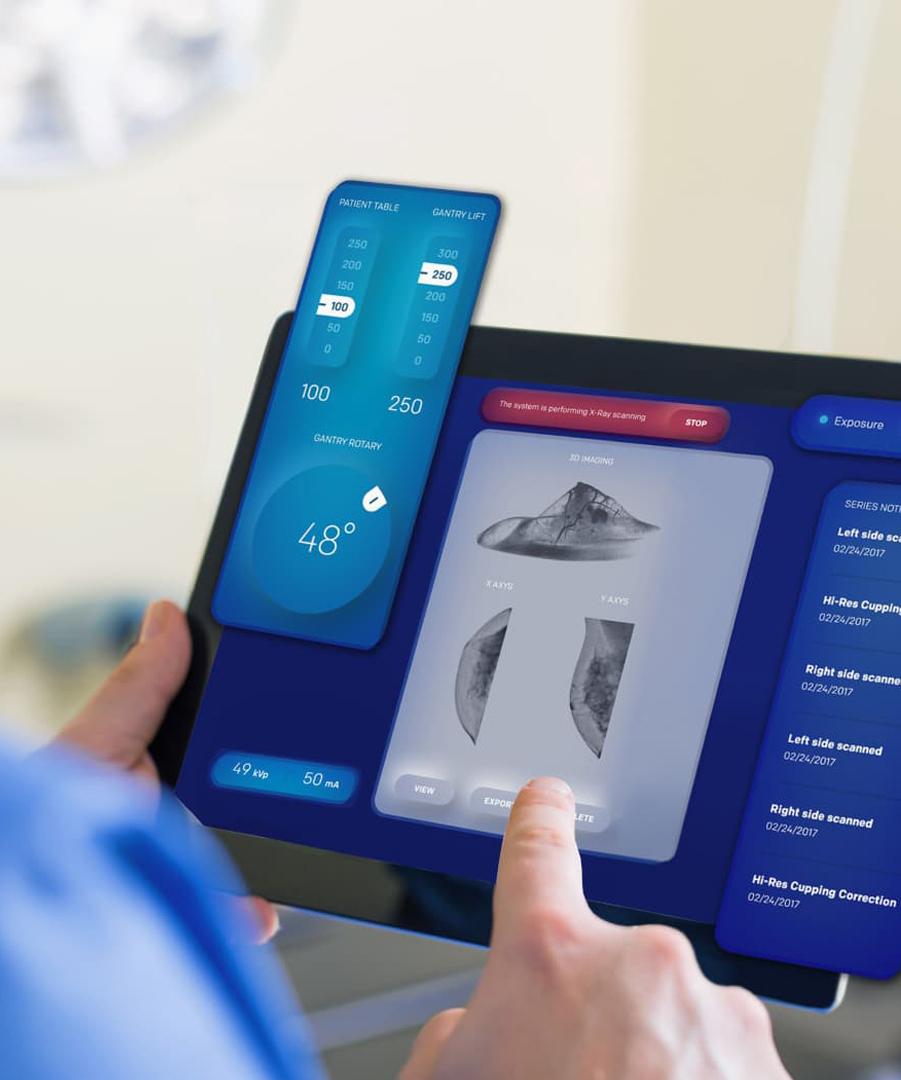


Water tower trucks refer to firefighting vehicles equipped with folding or combined folding and telescopic booms, turntables, and fire suppression devices. Firefighters can remotely operate the firefighting nozzle at the top of the boom from the ground to conduct aerial fire suppression. This article takes the HOWO water tower fire truck as an example to introduce its uses and structure.
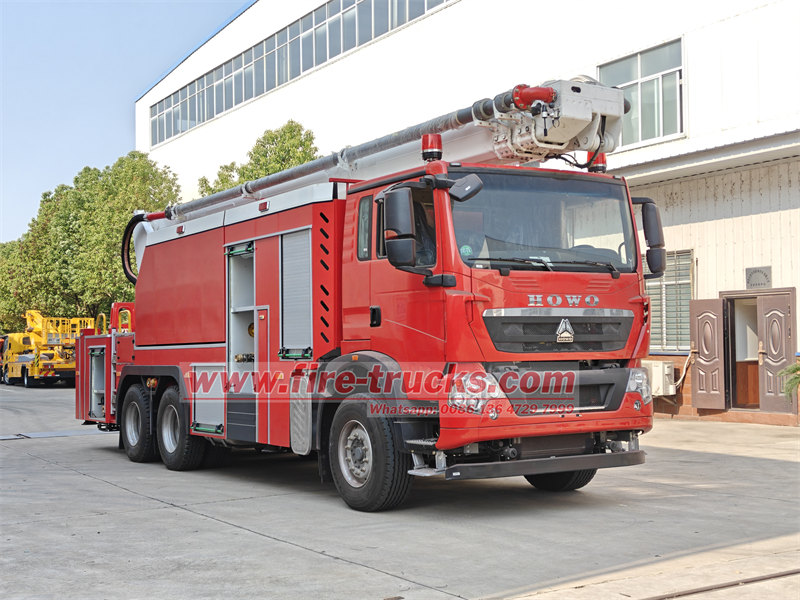
1) Applications
The HOWO water tower firefighting truck has the following notable features:
1. Outstanding operational capability: Features ultra-large-span operation capacity, enabling three-dimensional coordinated firefighting and ultra-close-range targeted fire suppression.
2. Wide applicability: Broad operational range, strong obstacle-crossing ability, and flexible operation.
3. Comprehensive functionality: Integrates high-altitude rescue and low-altitude firefighting, with both water and foam-spraying capabilities.
4. Superior performance: High firefighting elevation and large water discharge capacity.
Main applications include:
• Firefighting in industrial and mining enterprises
• Petroleum and chemical facility fires
• Oil tank and warehouse fires
• Large-scale building fires
Applicable disaster types:
• High-rise building fires
• Large-span space fires
• Petroleum and chemical fires

2) Structural Composition
The HOWO water tower adopts a folding boom design, enabling full-range rotation. All mechanisms are hydraulically driven and electrically controlled, featuring simple operation, rapid deployment, smooth operation, and high reliability. The vehicle is equipped with a liquid tank, a fire pump, and an electrically controlled remote monitor at the top of the boom, which has a long range and large flow capacity. It supports various firefighting modes, including straight stream, spray, water jet, and foam spraying.
1. Support Mechanism
The outriggers use an H-type structure made of high-strength alloy steel profiles, ensuring safety and reliability.
2. Boom Structure
The boom is constructed from high-strength alloy steel plates through cold bending and welding. It consists of three folding sections, driven by hydraulic cylinders for deployment.
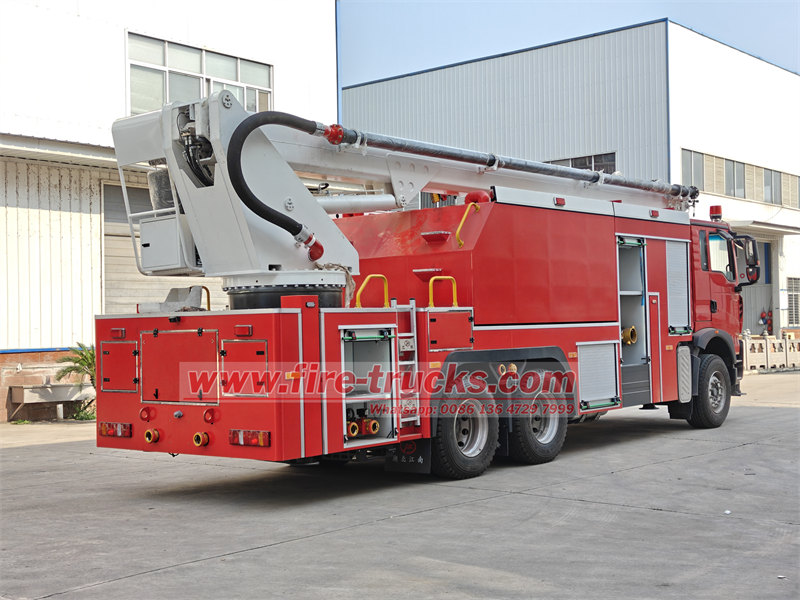
3. Upper Operation Console
The upper operation console is installed on the left side of the turntable. The lifting, lowering, and rotation of the boom are controlled via the operation handles on the console panel. During firefighting, the water monitor’s straight stream or spray modes can also be controlled from the console. The panel also includes switches for lighting, pressure gauges, and indicator lights.
4. Lower Operation Console
The lower hydraulic system mainly consists of outrigger control valves, horizontal and vertical cylinders, and bidirectional hydraulic self-locking valves. The outrigger control valve manages the extension and retraction of the outriggers, allowing simultaneous or individual movement of each outrigger for leveling the vehicle. Each vertical outrigger cylinder is equipped with a hydraulic lock to prevent instability. The console also includes power switches, pressure gauges, and lighting controls.
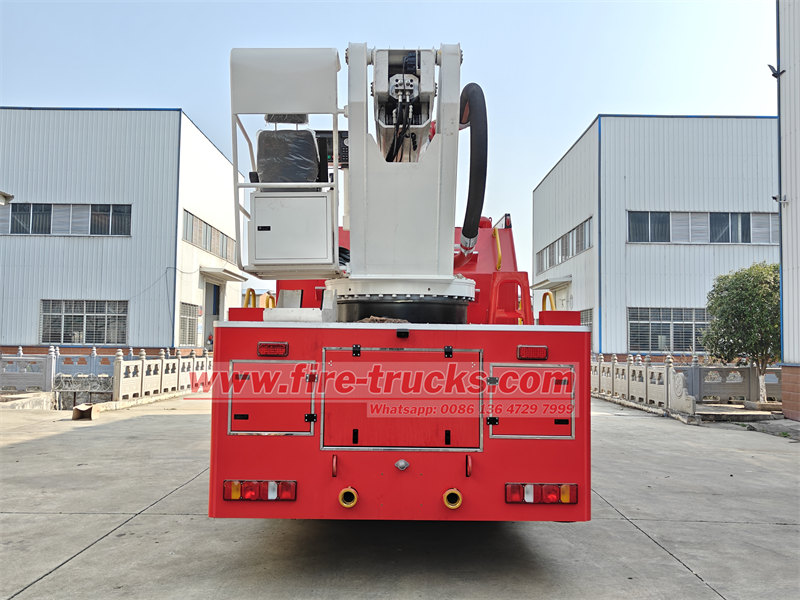
5. Water Supply System
The water system of the HOWO aerial tower fire truck is arranged under the longitudinal beams in the lower section and along the outer side of the boom in the upper section, connecting to the remote monitor. The monitor control handle is installed on the upper operation console. The truck is equipped with a centrally mounted fire pump, controlled via the front operation panel, which draws water from a source and supplies it directly or from the onboard tank. The pressurized water is then delivered to the remote monitor (or fire hose) for firefighting.
6. Water Tank
The water tank is made of high-quality stainless steel, with transverse and longitudinal partitions inside to enhance strength and reduce water sloshing. The top of the tank has an access hatch for filling and maintenance, sealed with a cover. A drain valve at the bottom allows for complete water drainage during cleaning or repairs.
7. Hydraulic System
The lower hydraulic system consists of a hydraulic oil tank, gear pump, check valves, transfer valves, outrigger control valves, and an emergency pump system. The directional valves on the outrigger control valve manage outrigger movement. The transfer valve ensures interlocking between upper and lower hydraulic circuits for sequential control and safety.
The outrigger control valve operates in conjunction with the upper directional valves to extend or retract the horizontal and vertical outrigger cylinders. It can control all outriggers simultaneously or individually for precise vehicle leveling.
8. Rotation and Luffing Mechanism
The rotation mechanism is driven by a hydraulic motor and planetary reducer, ensuring smooth and self-locking rotation. The luffing mechanism uses dual luffing cylinders combined with luffing balance valves and bidirectional hydraulic locks for synchronized and secure operation.
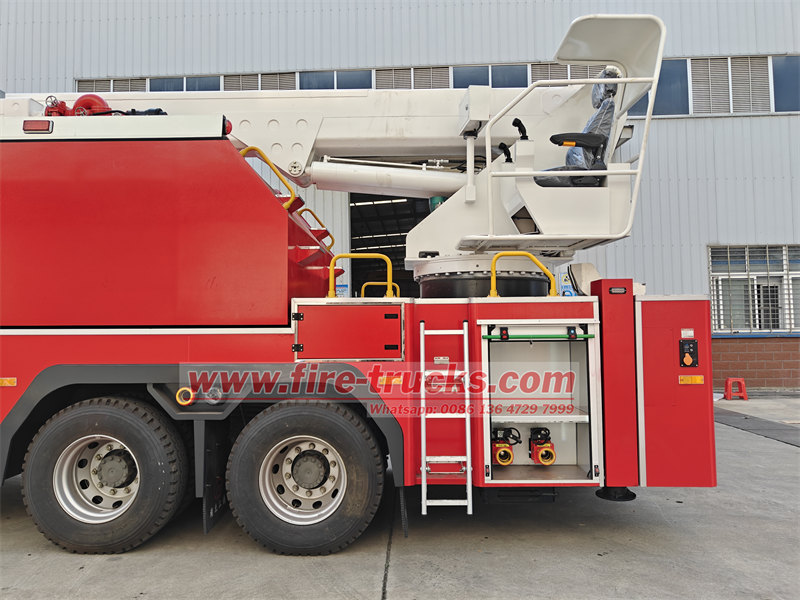
9. Electrical System
Lower section includes:
• Liquid level displays for water and foam tanks
• Operation console, instrument panel, outrigger lights, and vehicle alarm system controls
• Air valve: Controls the opening and closing of butterfly valves via pneumatic cylinders to supply water to the remote monitor, fill the water tank, or discharge water.
• Operation console and instrument panel: Equipped with indicator lights, switches, operation handles, or buttons, all labeled for clarity.
• Vehicle alarm: Activates rotating warning lights and sirens via an electronic alarm and beacon in the cab during emergency responses.
Upper section includes:
• Boom safety protection controls
• Operation console
• Remote monitor controls
• Remote monitor: Can be operated via buttons on the console or a wireless remote, supporting straight stream, spray, water jet, or foam spraying modes, with adjustable angles for targeted firefighting.
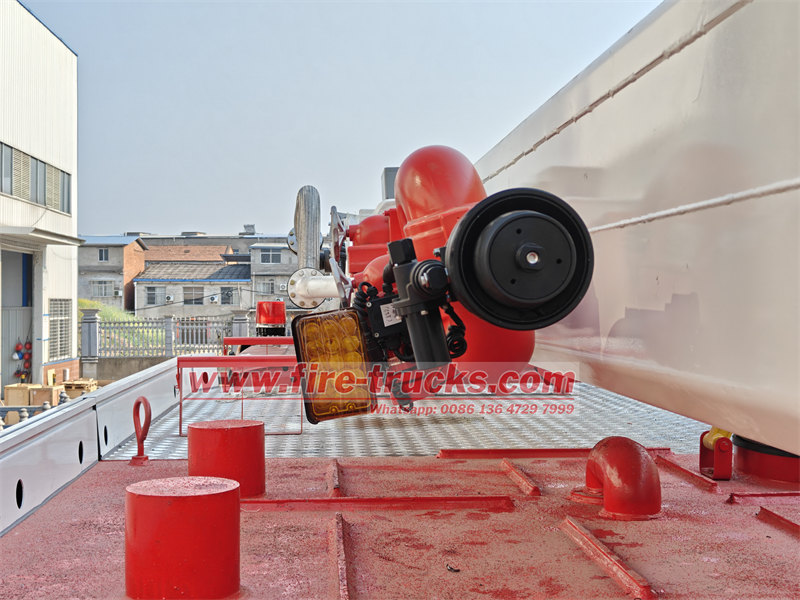
You may be interested in the following information